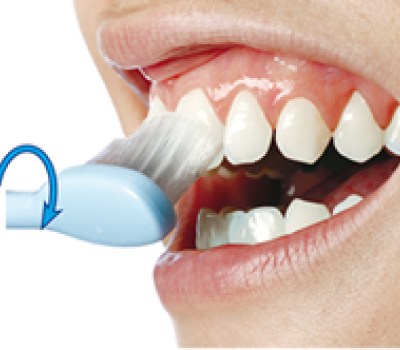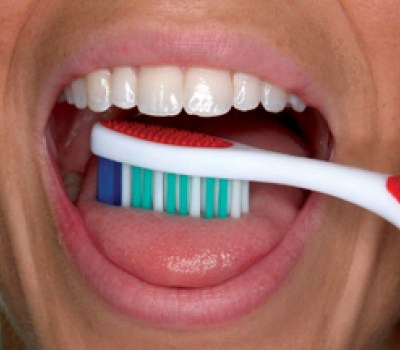
How to Brush?
1. Place the brush at an angle against the tooth making certain that the bristles are at the gumline.Gently brush thesurface of each tooth using a short gentle vibrating motion.
2. Brush the outer surfaces of each tooth, upper and lower, keeping the bristle angled against the gumline. Repeat the same method on the inner surfaces of the teeth as well.


3. To clean the inside surfaces of the front teeth, tilt the brush vertically and make several gentle up-and-down strokes using the front half of the brush.
4. Scrub the chewing surfaces of the teeth using a short back and forth movement Brushing the tongue will remove bacteria and freshen your breath.

Dental floss, or tooth floss, is a cord of thin filaments used to remove food and dental plaque from between teeth in areas a toothbrush is unable to reach. For more details visit this WIKI page.
Good fluoride containing tooth paste (any brand)
A small head to get into all the difficult to reach places in your mouth with soft bristles and slight ansulation with the long axis of hand.
2 times a day (before breakfast and especially before bed)
Mouthwash can be beneficial to kill germs and fight bacteria that can lead to cavities. A mouthwash containing fluoride can even helpprotect your teeth from cavities. Ingredients, flavor and price are factors to considering in choosing a mouthwash. Many mouthwashes contain alcohol, which can dry up the protective saliva in your mouth, so you may want to ask your dentist to recommend one for you. A mouthwash is a great dental product, but it cannot replace flossing and brushing. If you decide to use a mouthwash, be sure to use it in conjunction with brushing and flossing.
Orthodontic treatment is generally best carried out in children, but adults can have orthodontic treatment too – and more and more are doing. Age is less important than having the proper number of teeth. In children it may be necessary to wait for enough teeth to come through before starting treatment.

